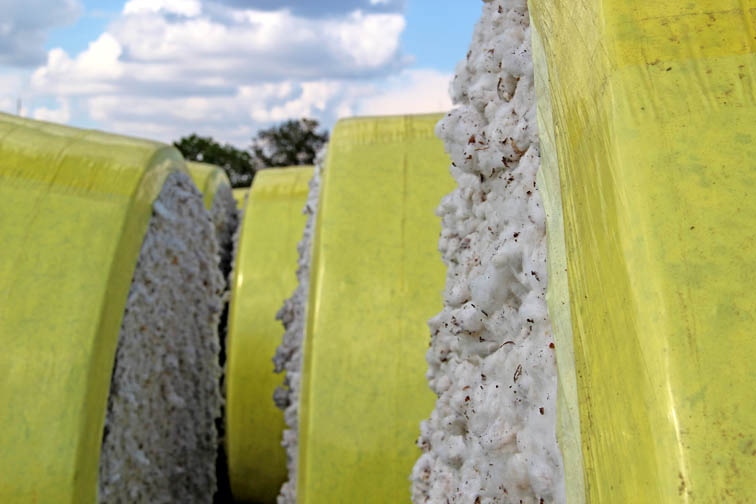
U.S. cotton has a reputation for top quality with major mill buyers overseas, says Mike Watson — but growers and ginners need to be increasingly vigilant to prevent contamination that can cause bales to be rejected and tarnish that outstanding reputation.
“Our customers perceive U.S. cotton as being contaminant-free. It’s a goal that’s tough to achieve, but that’s what they expect,” he said at the annual meeting of the Southern Cotton Ginners Association, held in conjunction with the Mid-South Farm and Gin Show.
“If there’s anything in a bale other than raw cotton, it shouldn’t be there,” says Watson, who is vice president of fiber competition for Cotton Incorporated, the research and promotion organization funded by assessments on producers and importers of cotton/cotton products.
“There is a long list of contaminants found in bales, ranging from plastic shopping bags that may have blown into a field, to plastic module cover fragments, to shop rags, and on and on. Among the worst is twine used on farms — it’s a real monster to deal with if it makes it through the ginning process and into the finished bale.”
In recent years, Watson says, there has been a trend of farmers spray painting messages and art on modules. “That paint often doesn’t come out of the cotton. You should spray paint modules only when absolutely necessary. If you want to use modules as a billboard, attach a sheet of plastic and paint that — but just be sure to remove it before it goes to the gin.”
With the advent of round modules, he says, foreign buyers have become more watchful for plastic fragments. “Anything remotely yellow will be blamed on module wraps. If a mill sees plastic in a bale, and your gin code is on that bale, you’ll likely be hearing from them. This is something that’s going to demand close monitoring in order to eliminate as much of this contamination as possible.”
With increasing use of electronics, bar coding, and radio frequency identification (RFID) systems, and information stored in the “cloud,” tracking of individual bales back to the source becomes a simple matter, Watson says.
“Technology is becoming more integrated in our operations, to make production, harvesting, ginning, and transporting more efficient, but at the same time it raises the bar on accountability.”
Clawing for lost market share
Over the past two decades, Watson says, U.S. cotton has undergone a major transition, going from an agricultural product to a consumer product, and from a commodity used mostly in America to one that’s mostly exported.
“In the 1990s, we were using about 11 million bales domestically and sending about 7 million to foreign buyers,” Watson. “Now, we’re using only about 3.6 million bales domestically and are exporting 11.3 million. Cotton is now a truly global market. If it weren’t for exports, U.S. cotton sales would be in a world of trouble.”
At the same time that U.S. cotton exports have been increasing, there has been a major evolution in foreign spinning mills, he says.
“Fifteen or 20 years ago, overseas mills were radically different than those in the U.S.; today, they’re essentially the same. The only difference is the distance we have to ship our cotton to those mills and tariffs and other barriers to trade.
“To be competitive in the world market, spinning mills in China, the Far East, and elsewhere have had to move to the latest equipment and most efficient management. Now, these mills are using technology that was once predominant in the U.S.
“We’re seeing more vortex spinning, which is much faster — but it puts a lot of stress on cotton fiber.”
Cost is still a major consideration for foreign mills, Watson says. “Depending on the yarn being spun, cotton can represent 50 percent to 75 percent of the manufacturing cost. If a mill doesn’t buy wisely, it can be out of business.”
For years, he says, cotton and polyester prices tracked each other closely. But when cotton prices skyrocketed in 2011, cotton’s share of the market declined and polyester claimed a larger share.
“We’ll be spending the next five or 10 years fighting and clawing to try and regain this lost market share,” Watson says.
Quality is a key factor in helping to keep foreign mills buying U.S. cotton, he says.
“Five years ago, we had slipped in quality, particularly in terms of length and strength, but now we’re producing longer, stronger fiber on the farm and in the gin.”
Even so, he says, length uniformity has not been improving at the same pace, and work needs to be done to preserve fiber length and reduce short fiber content.
About the Author(s)
You May Also Like




